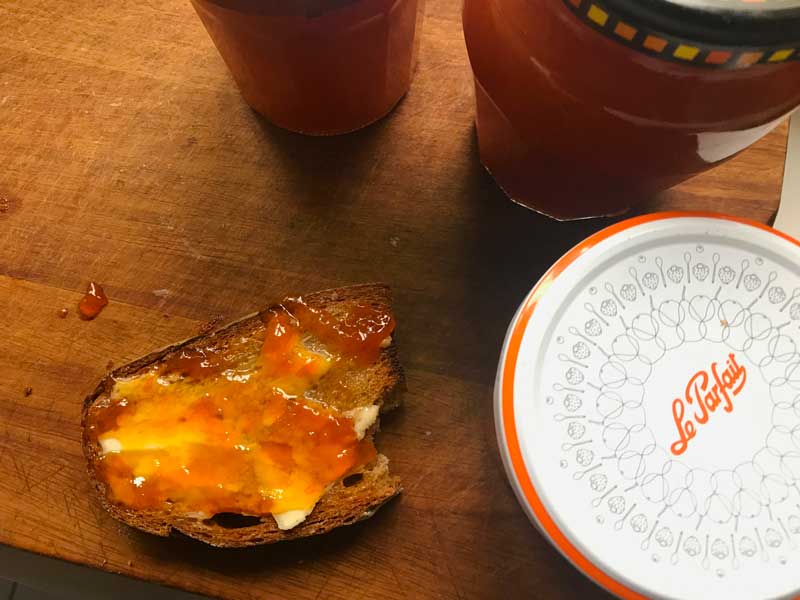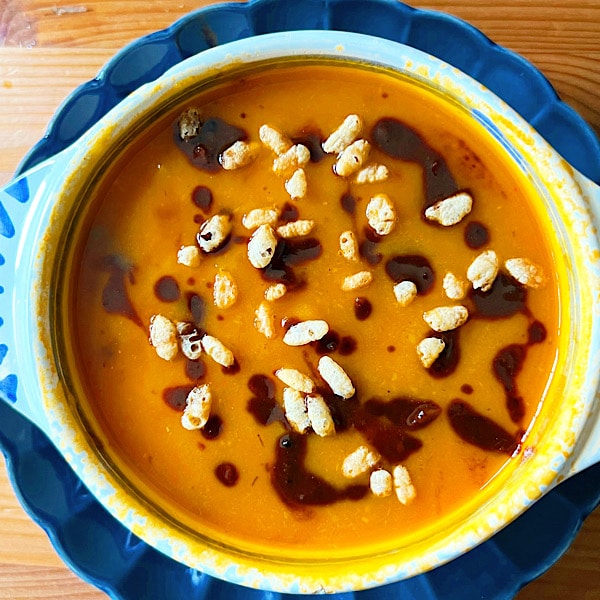
No, apricots are not still in season in France in September, but I did just find myself simmering a pot of apricot jam just recently…
While digging through my pantry, I noticed one jar of the apricot jam I’d put up in July had a splotch of mold in it. Not good, I thought, but chalked it up to a poor lid seal. (That can happen.) I opened the jar and… no. The seal was tight, but the jam was awfully thin. That meant that something else must have gone wrong during the preserving process. There were lots of possibilities – too much fruit (I’d made a big batch), too little sugar in the fruit, too short a cooking time, etc.—but there was only one solution: Recook and re-pack the remaining jars of jam to keep it from all starting to mold.
I emptied all the jam from the remaining jars into a saucepan (a messy business since you also have to rinse and dry all those jars), then let it cook till it looked thick and jammy (10 to 15 minutes), and the temperature reached 220˚F/104˚C, put it in jars, sealed it, and tested on a piece of toast. The double-cooked jam may not have had the same bright hue or jewel-like glisten that it had the first time around but it was thick, set, and tasty. And it would keep.
As I put the recooked jam away, the irony of the jars’ brand name “Le Parfait” (Perfect) was not lost on me. Homemade jam may be amazing, extraordinary, sublimely delicious, but is rarely, if ever “parfait.” Perfect infers a certain consistent standard, and jam-making is never an exact process. Every batch of homemade jam will be different (see my thoughts on the jam Fickle Factor here). No matter how well you think you (or I) know how to make jam—or cook anything, really—there’s always room for error (Moldy apricot jam has never happened to me before!) –and improvement.


Leave A Comment